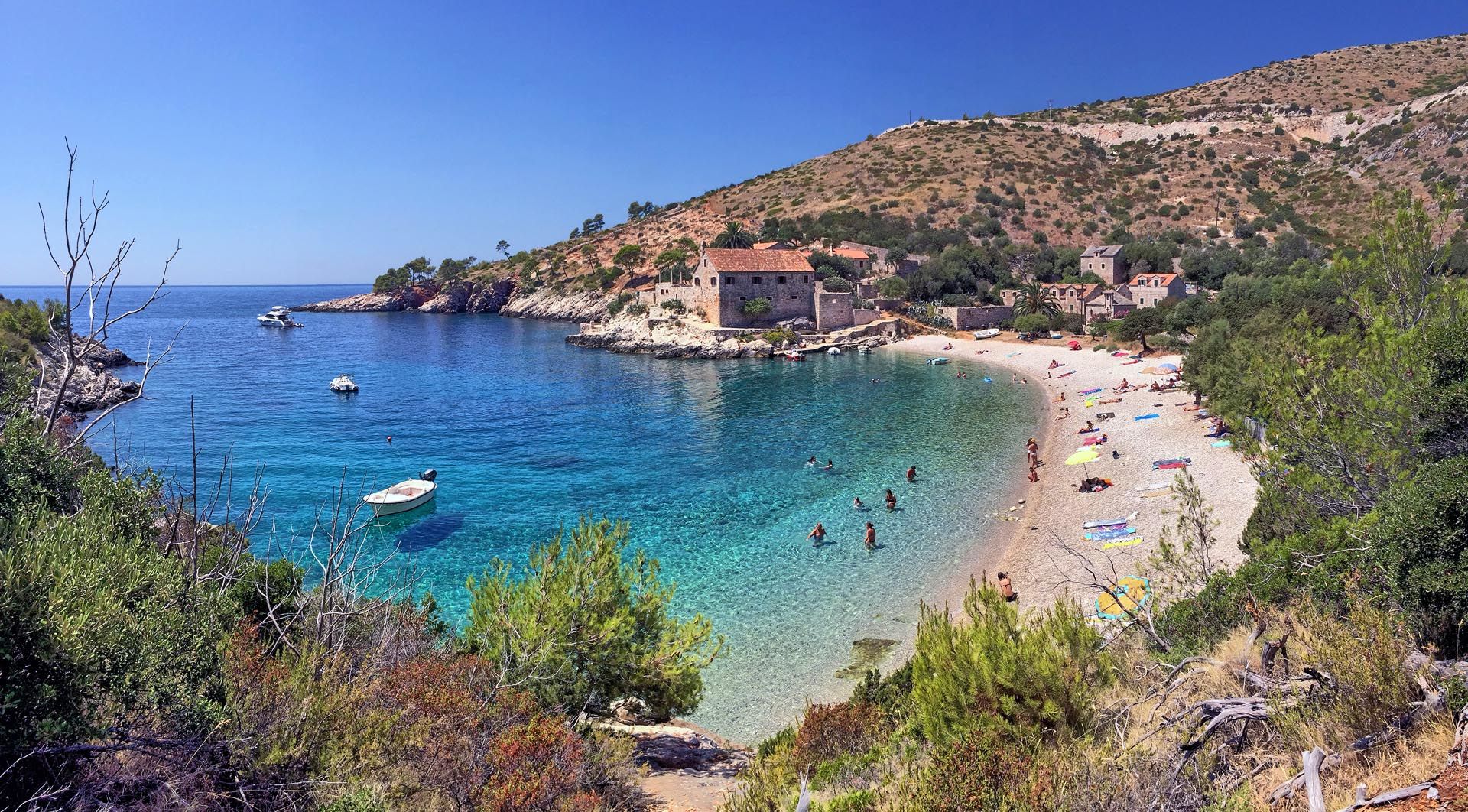Sail to: Šolta
Just a short sail from Split, Šolta feels like a world away. It’s one of the quietest stops when sailing in Croatia, and that's its charm: no mega-marinas, no cruise crowds, just stone villages, pine forests, and coves you might have all to yourself.
Stomorska, on the island’s northeast tip, is the most popular mooring spot, but “popular” here still means just a few taverns and a sleepy quay. For something with a touch more polish, sail around to Maslinica on the western coast. It's harbour strikes a rare balance, fishing village meets low-key luxury, and it’s easily one of the most scenic anchorages in Dalmatia.
Šolta’s interior is surprisingly wild. Small, almost-forgotten hamlets like Gornje Selo and Donje Selo dot the hills, linked by quiet roads perfect for cycling. After docking in Rogač, the island’s main port, you can hike or bike uphill to Grohote, a timeless settlement with narrow lanes, stone archways, and a church that still rings out over olive groves.
For a more stripped-back stay, beachside camping in Croatia doesn't get much more peaceful than Šolta. A few small campsites hug the coast, giving you front-row seats to the Adriatic, with nothing but crickets and waves at night.













